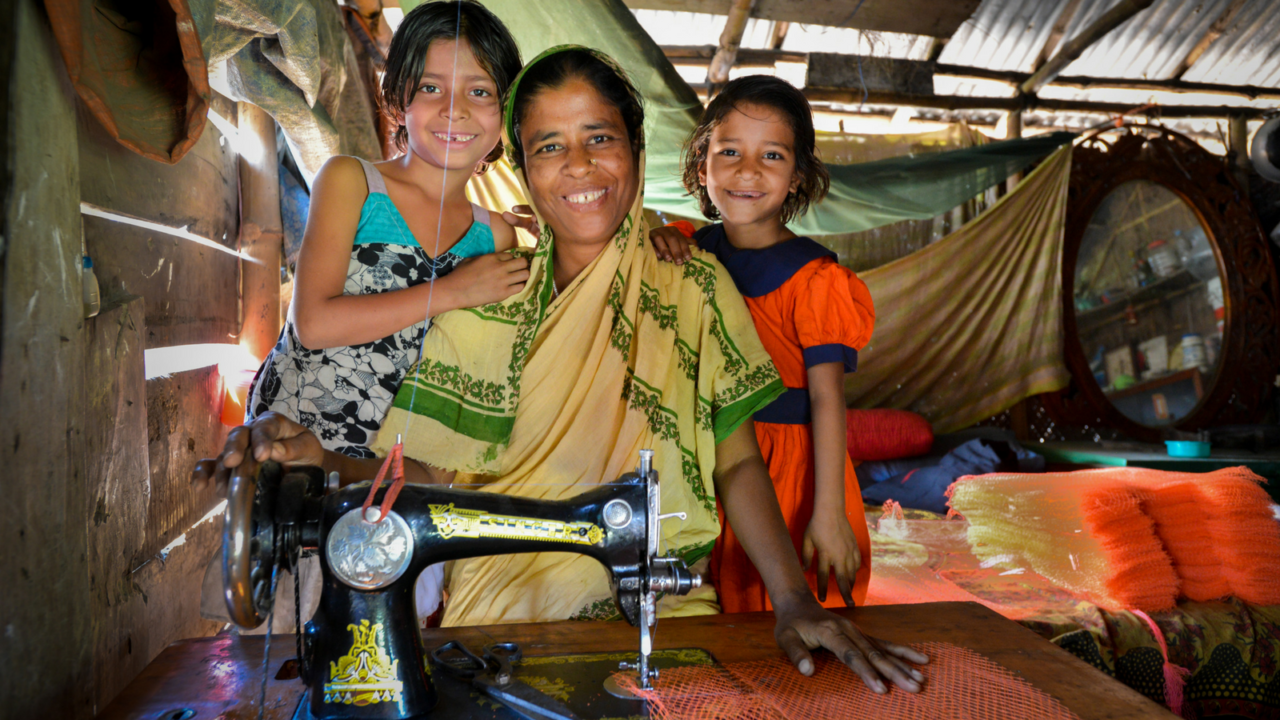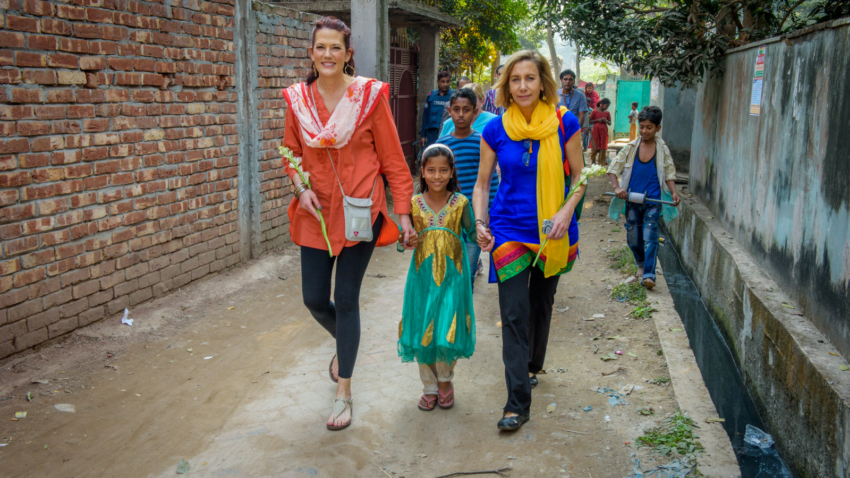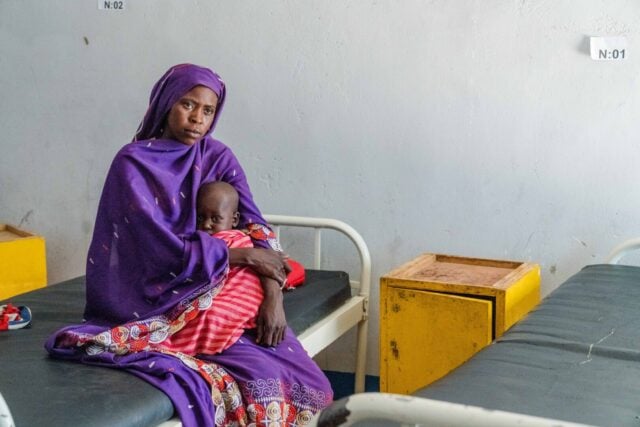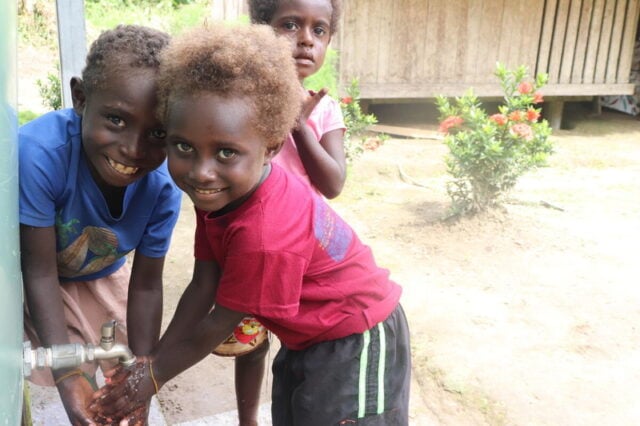While visiting impoverished communities in Jessore, Bangladesh, World Vision donor Lyné Brown said a prayer: “God, where are you?”
And then she met Nilufa, part of God’s plan to bring light to this dark place.
Read her story of hope.
* * *
Walking the streets of the Barandipara slum in Jessore, Bangladesh, I was a bit overwhelmed. No, I was completely overwhelmed.
I was still reeling from the last stop where we met 15 boys, ages 10 to 14, who worked all day in machine shops. Children, who should have been in school, working 12-hour days. Welding without safety glasses. Scraping paint off of damaged auto parts. Banging dents out of fenders.
I had never seen poverty like this. I’ve been to six countries in Africa, but there was a darkness here I cannot explain.
The road was lined with people, wide-eyed and curious, watching as 10 American women, dressed in brightly colored tunics and scarves, walked to visit a community-run Child-Friendly Space sponsored by World Vision.
The people were not smiling. The children didn’t wave and grab your hand when you got out of the van. Adults and kids alike pretty much just stared at us. There was a palpable hopelessness that just hung in the air like a heavy weight.
As I rounded the corner, the smell coming from the garbage dump further dampened my spirits. There were chickens and dogs and even some children running through the waste.
“God, where are you? People can’t live like this,” I prayed.
Finally, we got to the steps of the community center. A dark-eyed girl in a green dress with the brightest smile ran up and threw her arms around me in the tightest hug. A flood of emotion hit me. Where did she come from?
She stepped back in line to greet the other visitors, waving and smiling. I walked into the Child-Friendly Space. We were greeted by beautiful preschool children, dressed in orange and blue uniforms, giggling and waving as their visitors filed in and were seated at the front of the class.
We heard from the community workers, who were now proudly running the center without the need of assistance from World Vision any longer. We listened as the children sang and responded in unison when their teachers asked them questions. We were delighted by cultural dance and recited poetry.
There is hope. We saw it in their faces. In the eyes of the children. In the words of the teachers and community workers. Things can be better.
As we left the center, there was that dark-eyed girl in the green dress again. Sunshine spilled out of her smiling face. She grabbed my co-traveler Cheryl’s hand and my hand, and we walked back to the van like three best friends on an afternoon stroll.

This girl is such a light in a dark place.
“She has a story,” our driver said as we entered the van. “That girl you were walking with. She has a story.”
Her mother, Fatema, was going to abort her when she got pregnant. Her father, Abul, had not been able to work for many months after having surgery. The family was destitute. Abul thought it best not to have another child.
Fatema, devastated about her husband’s decision, went to Ritta, a teacher at the Child-Friendly Space, then run by World Vision. Ritta talked to Abul and worked with the family to come up with a plan to help them choose life. World Vision trained Fatema and provided her with a sewing machine so she could earn money for the family.
Nilufa was born.
That’s her name — Nilufa — the girl in the green dress.
God knew her name before Nilufa was born. He had a plan to bring light into this dark situation.
He saw Fatema’s tears when faced with a difficult decision. He changed the heart of a worried father, who did not think he could bring another mouth to feed into the world.
God intervened.
He used Ritta and World Vision to come alongside of this struggling family.
His light shines in the darkest places. He sees the possibilities. He shows up in the most unexpected ways.
Like in the smile of a girl in a green dress, in Barandipara slum in Jessore, Bangladesh.
He is here.
He does see.
There is hope.
Lyné Brown is a World Vision donor and National Leadership Council member. She is the Vice President of Ecommerce at Clorox.
Child sponsorship is one of the most powerful ways to fight poverty, bring hope to children’s futures, and shine light in the darkest places. Choose a child in Bangladesh to sponsor today.





Comments